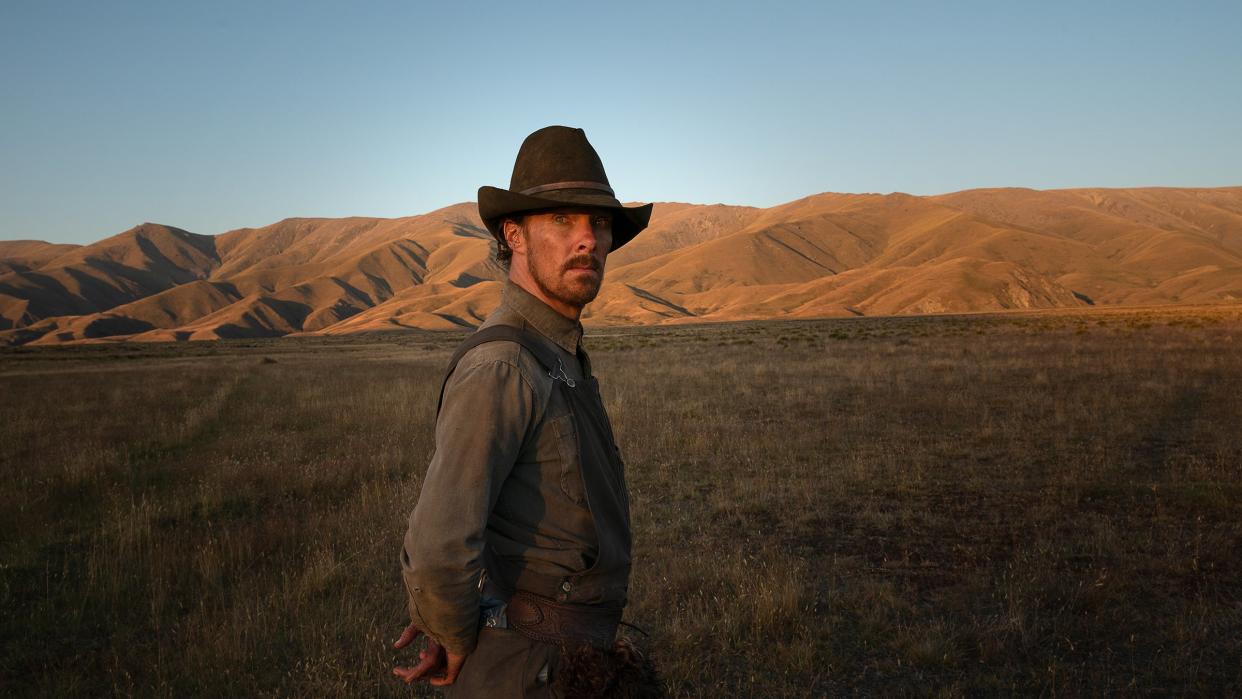‘The Power of the Dog’ Shows a New Side of Montana. That’s the Point.

- Oops!Something went wrong.Please try again later.
- Oops!Something went wrong.Please try again later.
This article originally appeared on Outside
Traveling into Montana's far southwest corner, the landscape shifts. The hills fold and flatten, the sky widens, and the fields of brush and cattle ranches stretch outward. Thick forests grow sparser over dark volcanic rock, and the craggy protrusions of the Boulder Batholith reveal themselves in dark, distinct shapes ringed by peaks in the far distance.
Writer Thomas Savage grew up and set many of his 13 novels here in Beaverhead County, including in the county seat of Dillon and the stage stop of Horse Prairie--two locations in The Power of the Dog, a psychological thriller set in 1925 where two wealthy brothers, Phil and George Burbank, George's new wife, Rose, and her son, Peter, live out a tortured version of the western narrative. A film adaptation of the book is now streaming on Netflix and is a heavy favorite to win a Best Picture Oscar for New Zealand director Jane Campion. But this success came too late: Savage died in 2003 at the age of 88, in relative obscurity even in his home state, as his biographer Alan Weltzien has pointed out. Only now are many people discovering Savage's vision of Montana, an authentic and nuanced American West sorely missing in our popular imagination.
If there is one state that suffers from an overly romantic portrayal of a place and its people, on screens big and small, it is Montana. I grew up on the other edge of the Boulder Batholith, and its strange, stunning landscape is embedded in my earliest memories. But a lifetime of watching half-plausible westerns set in the state, overflowing with white, macho, mostly invented Montana mystique, has left me jaded about my state's representation in the media. I impulsively find every flaw in these films and television shows, from Yellowstone to A River Runs Through It. The most famous spaces in this massive state are confined to a few heavily trod corners frequently photographed by tourists and plastered across social media. But the Montana of Savage's life and novels is not one of theatrical snowy peaks and lush pine forests. It is, like his work, far more subtle and haunting, while still undeniably Montanan.
When the first trailer for The Power of the Dog dropped, I was nervous about Campion's cinematic version of the story. For one, I heard it had been filmed not in Montana, but in Campion's native New Zealand, in Central Otago on the South Island, where parts of The Lord of the Rings trilogy were filmed. I was convinced the movie would not work. I watched the film prepared for the usual overly dramatic picture of Montana, one that would venture far from the raw reaches of Savage's unusual terrain.
But from the film's first frames of wide, brown lands, it became clear that Campion had done some serious research about the look and feel of this quieter corner of Montana. Campion's crew reportedly scouted locations in Montana but instead chose to film in New Zealand in part because they said Beaverhead County was too modern and didn't look quite rustic enough to pass for the mid-1920s. I'm not so sure about that explanation--while that may be true of the town of Dillon, the rest of the county is full of big, remote ranchlands, rivers, and mountains.
On social media, some Montana-philes have complained the film doesn't look like the usual mental picture of the state. And there are a few scenes that look nothing like southwestern Montana. (When George and Rose go into the mountains for a picnic, they are surrounded by green, high peaks. The local mountains here are sparse and gentle; New Zealand's peaks are too lush and dramatic to work.) But most of the movie takes place on the Burbanks' ranch, a set that could have been plopped down in Beaverhead County and looks enough like Thomas Savage's Montana that it doesn't distract from the story.
In truth, the specific look and feel of the land is only a minor character in the movie. The film could have been made anywhere; Montana is just a western backdrop. And this makes the little discrepancies of place less noticeable, the characters bigger and more interesting than the landscape itself. Campion's slow-burn adaptation is very clearly crafted as a way to blow up the white western macho mystique that relies on sharp Montana mountains as much as its leading men. There is a reason her depiction of the American West led mustachioed western actor Sam Elliott, a California native, to go on a tirade about the movie, calling it a "piece of shit" and decrying the idea of cowboys being something other than traditionally straight men."They're all running around in chaps and no shirts. There's all these allusions to homosexuality throughout the fucking movie," Elliott said.
According to his biographer, Thomas Savage was himself a gay man. Elliott's rant underscores the genius of the film: place doesn't matter as much when the larger point is to quietly burn down the tropes that harm people who don't conform to a narrow idea of what the West should be. While Montana is a critical background to the story, unlike many other Montana-set westerns before it, the state, or at least an idealist's concept of the state, isn't even a character. The Power of the Dog is not about Montana. It's a human story that just happens to take place here.
For exclusive access to all of our fitness, gear, adventure, and travel stories, plus discounts on trips, events, and gear, sign up for Outside+ today.

